Column
2022年12月19日
Water resource risks to companies are increasing due to climate change
- Overview: Water Resources
- Global droughts in recent years
- Impact of Water Resources on Corporate Activities
- How companies can address water resource risks
- Summary
Overview: Water Resources
When we talk about natural disaster risks due to climate change, we tend to focus only on flood risks due to intensification of precipitation, but in recent years, water shortages have occurred all over the world, and such risks related to usable water resources have become a major threat to human society. Water is an indispensable resource for many corporate activities, especially in the manufacturing industry, and it is necessary to deal with the business uncertainty caused by water resources.
In addition, as represented by CDP and SBTN, the rapid progress in recent years in corporate sustainability information disclosure initiatives have also begun to evaluate how companies are facing water resource-related risks.
In this column, we review recent global water scarcity events and explain how they affect corporate activities. In addition, we will briefly introduce how companies can deal with such water resource risks and how to utilize water resource forecast data.
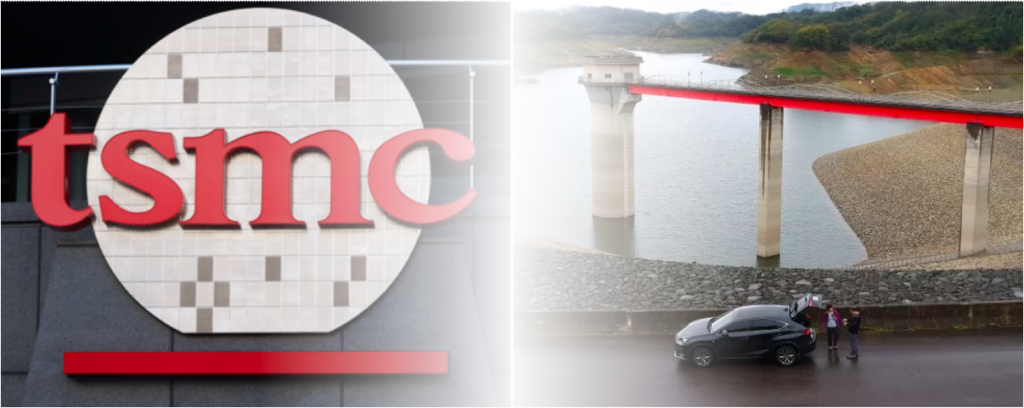
Global droughts in recent years
First, here are some of the most common water scarcity events that have occurred around the world this year.
In California, USA, water resources are supplied mainly by precipitation and snowfall in winter, but January ~ March this year had very little rainfall, making it the driest winter in the past 100 years. This light rain is overtaken by rising temperatures, and drought, which is said to be the worst on record, continues*1. Water shortages are not limited to arid regions like California. Europe, which is known for its relatively stable climate, was also hit by a record-breaking heat wave and light rain in July and August this year. As a result, the water level of the Rhine River, the second longest river in Europe, has fallen to the lowest level in 70 years*2.
In addition, there are such areas that experience both floods and droughts in a short period of time. In Sichuan Province, located in the upper reaches of the Yangtze River in inland China, torrential rains flooded more than 440,000 people in July last year, resulting in economic losses of more than $38 million*3. On the other hand, this summer, the Yangtze River dried up due to the continued extreme heat with the maximum temperature exceeding 40 degrees Celsius, and a serious drought occurred*4.
According to the World Meteorological Organization, the number and duration of droughts in recent years have increased by 29% compared to before 2000*5. In addition, the latest research from the University of Tokyo predicts that droughts exceeding record highs will become the norm in several regions around the world in the near future, and it is necessary to pay closer attention to the risk of water resource shortages than ever before*6.
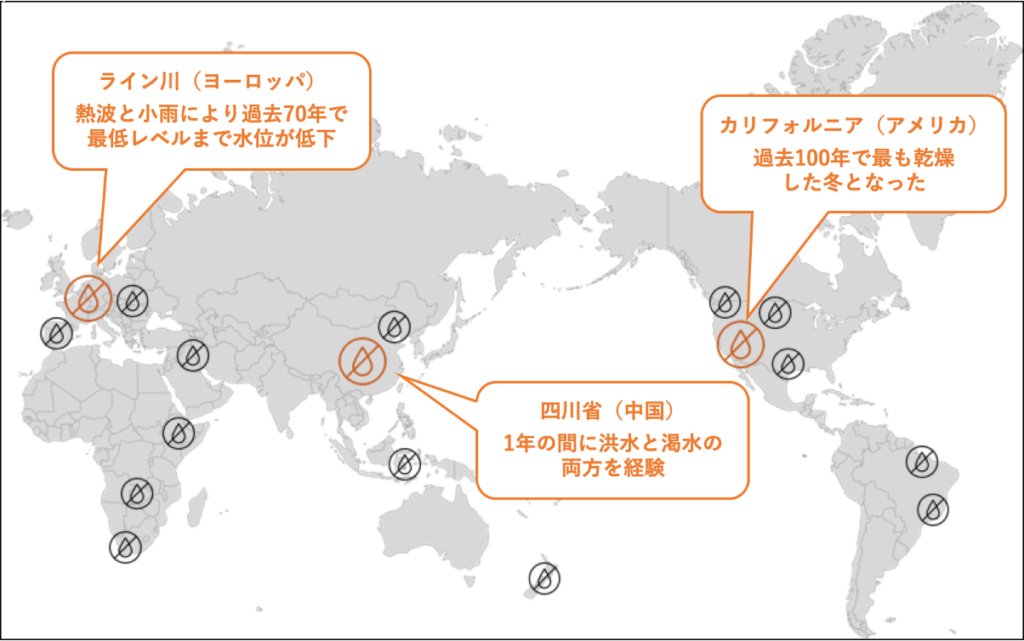
Impact of Water Resource Risks on Corporate Activities
With water resource problems becoming increasingly serious, how will companies be affected by water shortages? Here, we will explain with specific examples of the manufacturing industry as an example. In the manufacturing industry, products and services are generally provided to consumers through the supply chain of “procurement, production, logistics, and sales,” but in any of these processes, there is a risk of business deterioration due to water resource shortages.
First, I will explain the production process that will be most affected. The most direct impact is the lack of water resources used to produce products. For example, TSMC (Taiwan Accumulated Circuit Manufacturing), the world’s largest semiconductor manufacturer, has been restricting the production of semiconductors that use a large amount of water in the manufacturing process due to the low rainfall that has continued in Taiwan since July 2020, and water shortages have contributed to the global semiconductor shortage that continues to this day*8. In addition, there have been cases where the use of electricity has been restricted due to insufficient power generation due to a decrease in the amount of river water. In addition to these effects, it is necessary to consider the effects of water shortages, such as an increase in production costs due to soaring water and electricity charges.
Next, we describe the risks in the process of logistics. It may not be familiar to Japan, but large rivers overseas are important logistics routes, and when the water level drops, cargo transportation is affected. The aforementioned Rhine River transports 300 million tons of cargo annually, accounting for 80% of Germany’s water transport, but due to the recent drop in water level, the transport capacity has dropped to about 25~50% of normal, causing economic losses of about 0.5% to Germany [*2].
In this way, the impact on the production and logistics process occurs when the company’s own site or the surrounding area suffers a water shortage, but in the procurement process, the risk of water shortages at all supplier sites that are upstream of the supply chain is taken into account. Must be. The aforementioned semiconductor shortage is a typical example. Chemical and pharmaceutical manufacturers that use not only mineral and metal resources and processed products but also agricultural products as raw materials should be concerned about insufficient yields due to drought. It should also be noted that shortages of raw materials are often accompanied by soaring raw material costs.
The last is the risk in the process of selling. If water shortages disrupt production and logistics in a factory, there is a risk of reduced reputation and, in the worst case, lawsuits, due to delays or shortages in the supply of products to clients and consumers.
The water resource risks to the manufacturing industry are summarized in Figure 3. Not only can every part of your business be affected by water shortages, but you also need to pay attention to upstream and downstream companies involved in your supply chain. In addition, although this explanation focused on the manufacturing industry, we should review the risks in our business once again, keeping in mind that similar water resource risks may occur in some or all processes of business in other industries.
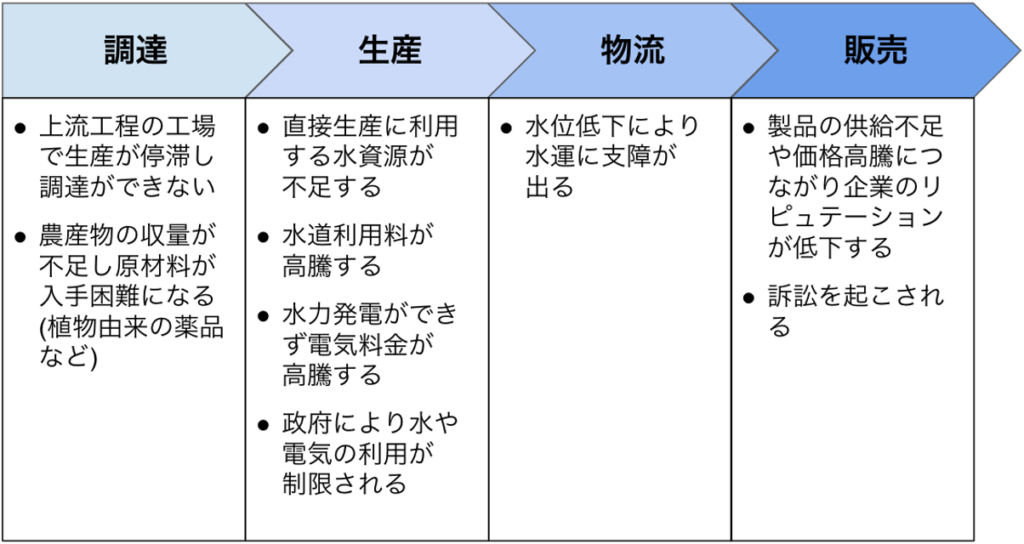
How companies can address water resource risks
In order for companies to deal with water resource risks that can have a significant impact on their operations, it is necessary to analyze their own risks based on information on their own bases and data related to water resources. Specifically, it is important to effectively reduce water resource risks according to the four steps of “screening,” “detailed analysis,” “consideration of countermeasures,” and “monitoring” as shown in the figure. In this column, we will introduce the water resource forecast data that can be used in the monitoring step. (A detailed explanation of water resource risk analysis will be summarized in a separate column.) )
Water forecasts, like the weather forecasts you check every day, predict water stress in the days to weeks ahead of Japan and other parts of the world. By driving a hydrological model that simulates the flow of water on the ground using weather prediction data as input, it is possible to predict the amount of water resources in the future in the form of river flow.
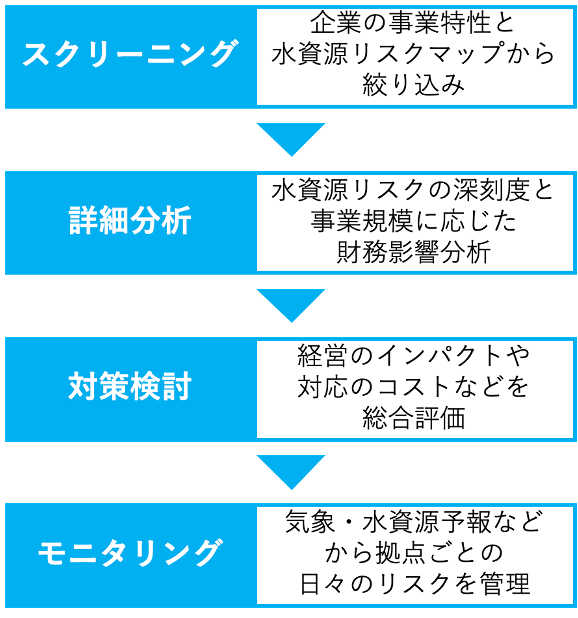
Currently, many research institutes in Japan and overseas are working to improve the accuracy of real-time forecasts of water resources. This time, we will introduce the Global Flood Awareness System (GloFAS), a global water resources forecasting system operated by the European Commission’s CEMS (Copernicus Emergency Management Service). In addition to near-real-time flow monitoring, GloFAS also provides 30-day and 4-month forecasts of river flow using 51 ensemble weather forecast data, and its accuracy has been verified at 1,532 current observation points worldwide. The figure shows the water resource risk dashboard under development by our company based on GLoFAS data. When you register the location information of your site, the forecast value of the amount of water resources (river flow) up to 30 days in advance and the water resource risk probability of the site based on it are instantly calculated and graphed. These water resource forecasting services can be used to proactively address water shortages, reducing the risk of shutdowns and increased costs. It can also be useful for disclosing information on water resource risks such as CDP and TNFD, which companies are forced to respond to in recent years. Gaia Vision will accelerate research and development so that companies can provide more useful data and information for management decisions and business risk reduction.
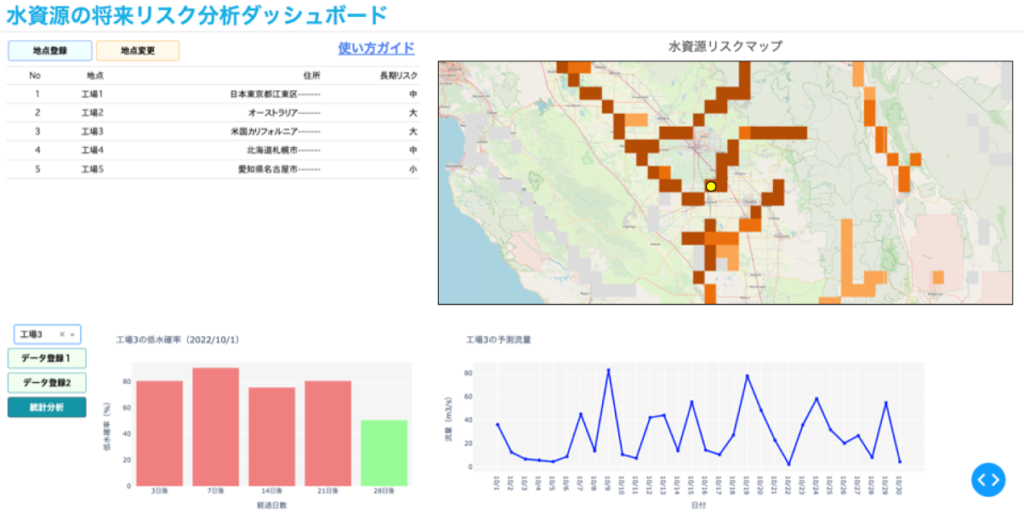
Gaia Vision Services
Gaia Vision provides a variety of services, including support for efforts to improve resilience to climate change-related risks, such as the water resource forecast data described in this article, support for information disclosure related to decarbonization and climate change, such as TCFD, and climate vision for the climate risk analysis application. If you have any problems with risk management based on water resources or disclosure of information on climate and physical risks, please contact us.
Summary
- Water scarcity events are on the rise around the world, and there are concerns that climate change could lead to droughts of unprecedented scale in the future.
- Since water resource risk has various impacts on any process of a company’s supply chain, it is important for companies to analyze water resource risk in order to reduce operational risks and disclose sustainability information.
- Water resource forecast data developed around the world is useful for monitoring water resource risks at our own bases.
Reference material
- JETRO Business
https://www.jetro.go.jp/biznews/2022/06/2640cf837214e964.html - ALJAZEERA: What’s the impact of the drought in the Rhine River
https://www.aljazeera.com/program/inside-story/2022/8/19/whats-the-impact-of-the-drought-in-the-rhine-river - ParsToday Floods in China’s Sichuan Province, 80,000 people evacuated
https://parstoday.com/ja/news/asia-i82448 - Tokyo Shimbun: Sichuan Province with water shortage, Toyota factories suspend operations 80% of the power generation hydroelectric power generation …
https://www.tokyo-np.co.jp/article/196545 - WMO: 2021 STATE OF CLIMATE SERVICES – Water
https://library.wmo.int/doc_num.php?explnum_id=10826 - Faculty of Engineering, The University of Tokyo: Predicts that droughts exceeding record highs will become the norm in several regions around the world in the near future
https://www.t.u-tokyo.ac.jp/press/pr2022-06-29-001 - Carbon Brief: Attributing extreme whether to climate change
https://www.carbonbrief.org/mapped-how-climate-change-affects-extreme-weather-around-the-world/ - Forbes: No Water No Microchips: What Is Happening In Taiwan?
https://www.forbes.com/sites/emanuelabarbiroglio/2021/05/31/no-water-no-microchips-what-is-happening-in-taiwan/
News
- 2024年05月10日 Gaia Vision is listed in “Summary of Recommended DX Service and Solution Providers”.
- 2024年05月01日 Gaia Vision is listed in “Summary of Recommended DX Service and Solution Providers”.
- 2024年04月16日 Gaia Vision is listed in “Summary of Recommended DX Service and Solution Providers”.
- 2024年04月14日 Gaia Vision is listed in “Summary of Recommended DX Service and Solution Providers”.
- 2024年03月29日 Gaia Vision is listed in “Summary of Recommended DX Service and Solution Providers”.
Column
-
-
-
-
-

